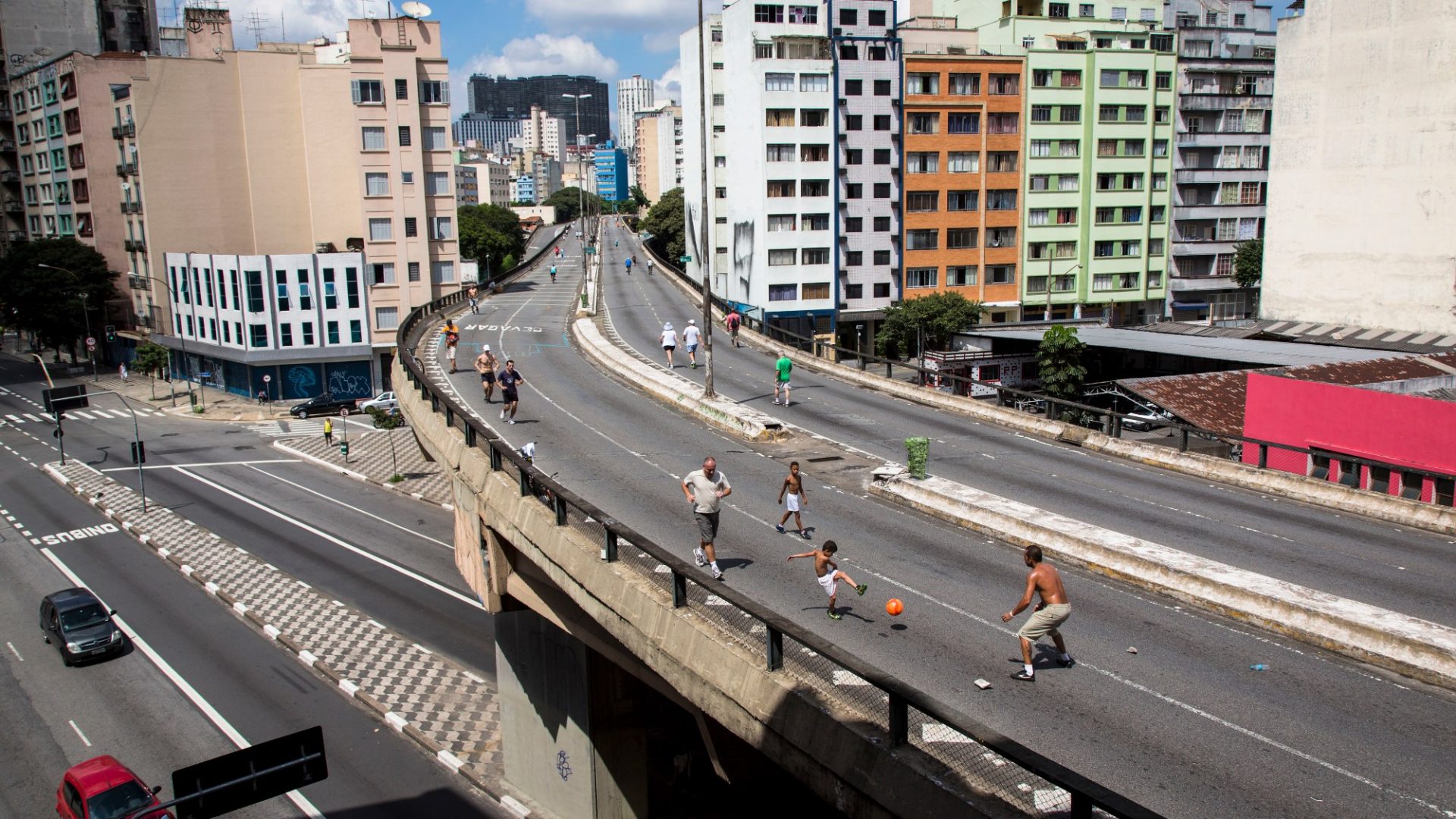It’s late 2019, and I’m in the old centre of São Paulo with Alex, a friend and political blogger based in the city, hunting for the Minhocão (Big Worm). A giant elevated highway, it opened in 1971 and has become a perverse tourist attraction – and Alex wants to show me why.
He takes me at night, around 10pm when the summer heat has eased, but the air is still thick and warm. We have to hunt around for the entrance ramp at the Praça Roosevelt, a big square laced with a tangle of highways, but eventually we find it, and as we walk up on to the roadway the Minhocão soon reveals itself as a distinctive space among the central city’s densely packed high-rises. We’re lifted above the everyday city; it feels like a different world.
In the daytime, this place would be teeming with traffic. At night, with the cars, buses and trucks gone, it feels weirdly like a beach. The space is big and undulating, an oddly handsome piece of landscape design now we can see it without traffic. We walk the three and a half kilometres to the end, all the while the roadway gently twisting among the towers of the surrounding city; cyclists and joggers whizz past, teenagers sit on the central crash barriers smoking weed, and dogs run about. We spend a couple of hours on the Minhocão, soaking it all up. I have already half fallen in love with it.
The history of the Minhocão is not pretty. Built during the most repressive period of Brazil’s military regime (the anos de chumbo, or “years of lead”), it was opened in 1971, and from the beginning, thoroughly disliked. Built right over the top of the Avenida São João, an elegant street lined with cinemas and restaurants; it plunged a neighbourhood into gloom, created a dangerous zone of shadows, and depressed property values. On the upper level, the curves and undulations that today make it weirdly appealing for a pedestrian were positively dangerous for the driver.
From the Minhocão’s opening in 1971, local newspapers abounded with stories of police chases and drunken driving; cars routinely flew off the roadway in the middle of the night. At the end of 1976 a group of sleep-deprived residents complained to the municipality of São Paulo, and – remarkably, given the prestige of the project, and the authoritarian times – succeeded in having the highway closed at night, initiating a progressive series of closures leading to the present-day condition in which the Minhocão has legal status as a park – the Parque Minhocão – albeit a temporary and intermittent one.
A local businessman, Athos Comolatti, set up the Associação Parque Minhocão (Minhocão Park Association) and encouraged discussion around a permanent park in the style of the High Line in New York City, a popular conversion of a disused rail line. But the Minhocão, like urban motorways everywhere, remains a problem; during the days of its operation as a highway, the levels of atmospheric pollution in the surrounding environment are extraordinarily high, while the degradation of the historic environment is clear enough; most disturbing for the visitor perhaps is the high incidence of homelessness, especially at the eastern end of the highway, where the undercroft is a shelter for sometimes hundreds of people, in tented encampments or sometimes sleeping directly on the ground.
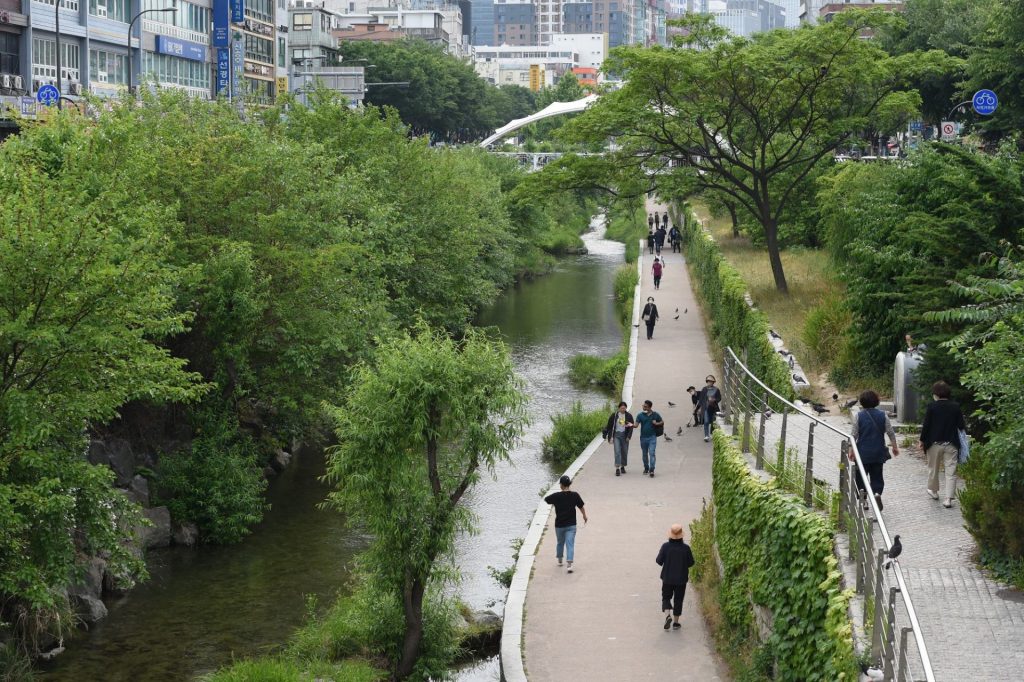
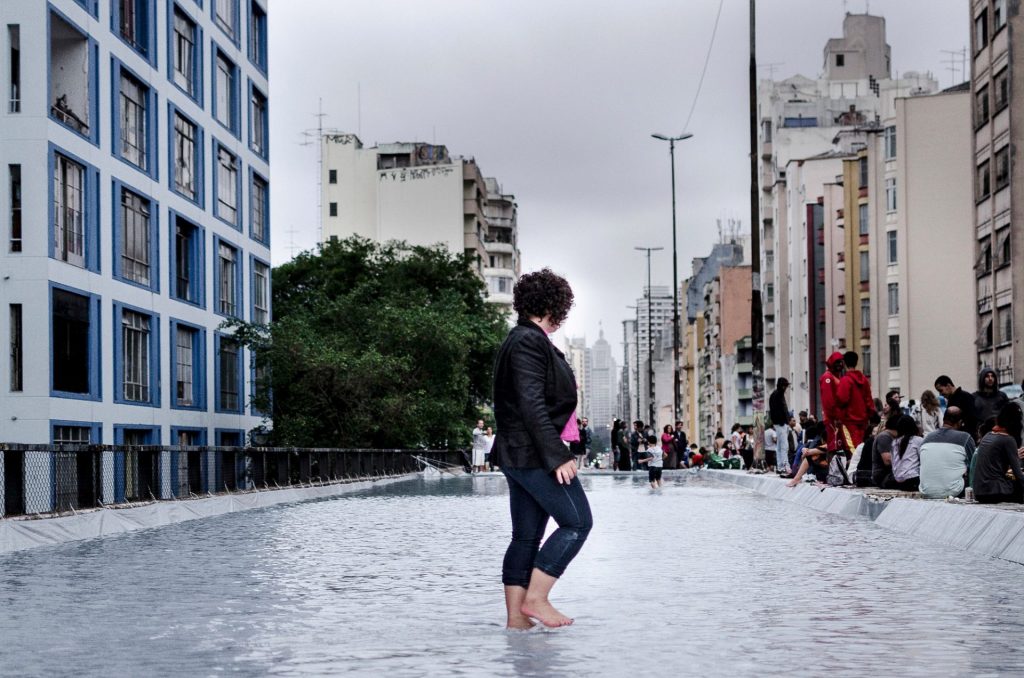
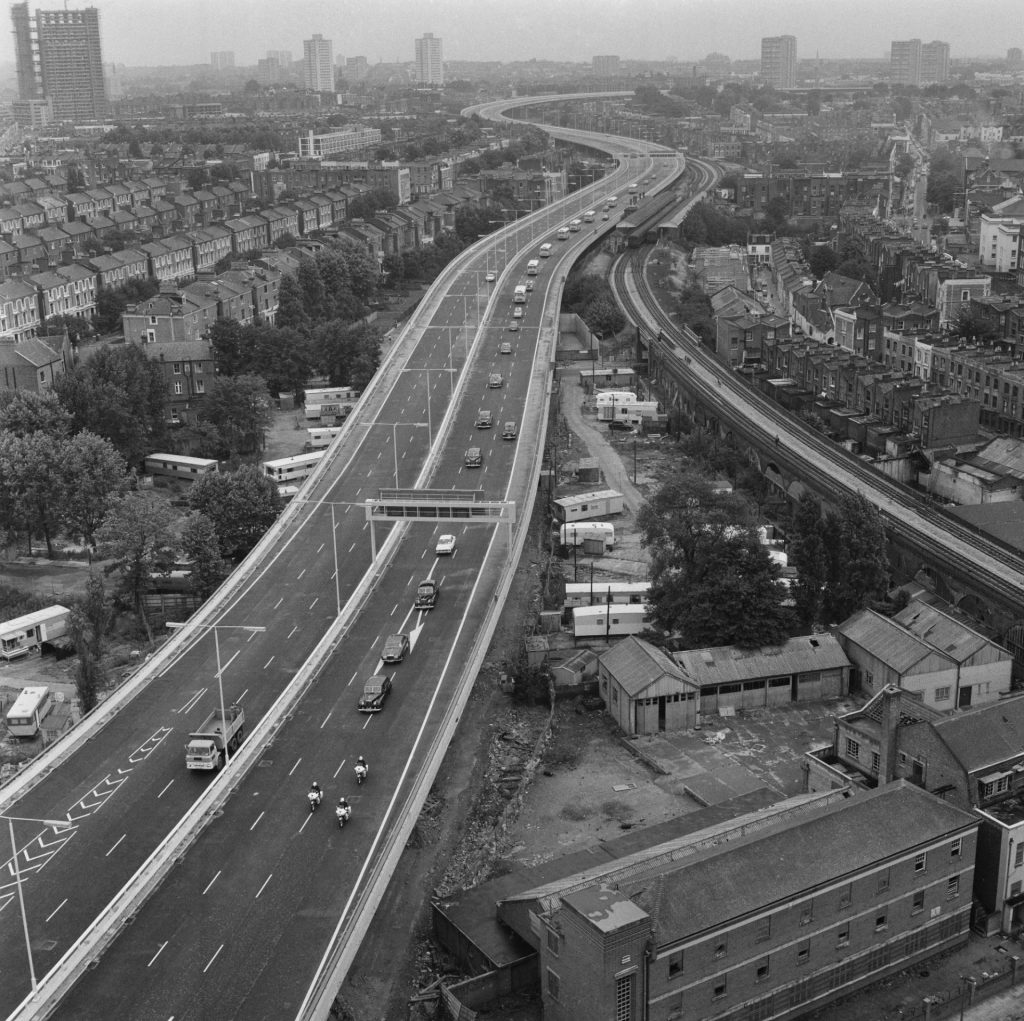
The Minhocão was built in a peculiarly inward-looking phase of Brazil’s history, but it’s representative of an international phenomenon that cuts across cities in dictatorships and democracies alike. In the 1960s and into the early 1970s, if you wanted to express urban modernity, you built an elevated highway; the results were extraordinary, and extraordinarily disruptive, with urban clearances on an unprecedented scale, the severance of communities (very often those most disadvantaged). Every city did it, from Seoul with its Cheonggyecheon highway, to Madrid and its M-30, London’s Westway, Glasgow’s M8, New York’s Cross-Bronx Expressway, to Los Angeles and the entirety of its freeway system.
It appealed to Big Men, anxious to make an impression – Robert Moses in New York, for example, cutting his way through his “overbuilt metropolis” with a “meat axe”. It could often enough be the sign of political authoritarianism, as in São Paulo, or the operation of opaque planning committees.
It could occasionally be the object of intellectual fascination. For the English architectural critic Reyner Banham, for example, LA’s freeway interchanges were “among the greater works of Man”. But increasingly they were the objects of popular disgust, and protest.
Eventually they became politically impossible. In New York, Moses’s insistence on pushing on with the Lower Manhattan Expressway (LOMEX) at the end of the 1960s in spite of well-connected, vocal opposition, put an end to his half-century political career.
Not many have been built since the 1970s, at least in the richer parts of the world. The question of what to do with the legacy of the automotive landscape is now urgent, as urban expressways are coming to the end of their design lives, if they are not actually falling to pieces. The popular view is that they should be torn down, the subject of a powerful 2024 book by the American journalist Megan Kimble, City Limits. It’s hard not to empathise with the restorative sentiments in that book: that highways are community-destroyers, and they should be removed, and the wounds healed with traditional streets and parks.
Suggested Reading
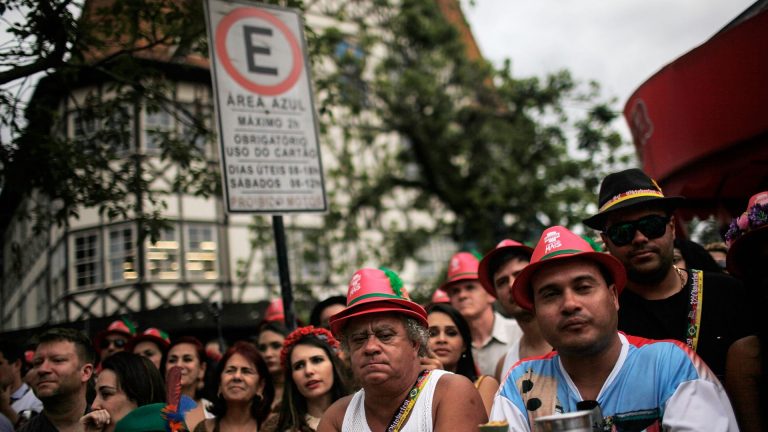
Celebrating Oktoberfest in Brazil
Highway removal has been done most spectacularly perhaps in Seoul, where between 2004 and 2005 the 5km Cheonggyecheon Highway was demolished to make way for a reinstated – or more accurately, recreated – river, populated with herons and carp.
The poster child for such environmental transformations, Cheonggyecheon is astonishingly lush, and in its lower reaches surprisingly wild (although its river is in actual fact a fiction, a giant water feature run from a pumping station – the whole thing can be turned off at night).
Madrid followed in the 2010s, tunnelling a 10km section of its M-30 motorway, and building a huge park over the top, the biggest project of its kind in Europe. Like Seoul’s Cheonggyecheon, in places a convincing wilderness.
Meanwhile, the US has perhaps the most famous case of highway removal, Boston’s so-called Big Dig, which relocated the I-93 interstate underground, allowing some bold public realm projects in the neglected central business district. These projects have been breathtakingly expensive, often significantly more so than the highways they replaced – the Big Dig cost over $20bn and took 20 years.
But all that money and effort in Boston has also produced some of America’s most sterile public spaces; the superficial greening of the city doesn’t always mean a better city. A much better example, I think, is the Minhocão, which – despite its flaws – demonstrates how diverse groups and competing demands can coexist.
That balance must constantly be negotiated, and no side in the Minhocão debate permanently has the upper hand. But the Associação Parque Minhocão felt confident enough to wind up their activities in 2023, feeling that the idea of the park was sufficiently well established. It exists powerfully as an image now, and for the past decade, its environs have become an open-air art museum, with 40 or so murals on the facades of the adjoining buildings, the Museu de Arte de Rua (Museum of Street Art). It has become a tourist attraction, globally celebrated.
The Minhocão shows how, over time, and with multiple actors, a place can be created with minimal investment. The only costs over the years have been for some temporary street furniture, and barriers lining the parapets to satisfy safety regulations, along with some temporary structures in scaffolding to allow access to the roadway.
Meanwhile, it’s become the site of some remarkable, and suggestive interventions over the years. An open-air cinema operates intermittently, and there was once, in early 2014, an Olympic-sized swimming pool. It is also the subject of a remarkable 2010 documentary film, Elevado 3.5, by João Sodré, Paulo Pastorelo, and Maíra Bühler, detailing in poignant face-to-camera interviews the lives of the residents in the Minhocão’s neighbourhood. The Minhocão has – despite its ugly history, and without any significant investment – become a significant place.
As has, arguably, London’s A40(M), better known as the Westway. It is no park, and the traffic still rumbles east and west 24 hours a day across Ladbroke Grove. But underneath it’s teeming with life, one of the richest and most diverse parts of west London, with a thriving cultural infrastructure managed by the Westway Trust, a charity. So dense is the activity in and around under the highway, you scarcely notice the traffic.
The Westway has become an accidental megastructure, landscape and place combined. Imperial College found it suitable enough to announce two new student hubs beneath the highway in 2024, designed by Turner Works. The urban expressway can have a grim history and the history of severance is real enough, as are questions of environmental degradation. But over time, the expressway can also, counterintuitively, evolve into a genuine part of the city.
Richard J Williams is Professor of Contemporary Visual Cultures at the University of Edinburgh. His latest book is The Expressway World (Polity Books, 2025)

